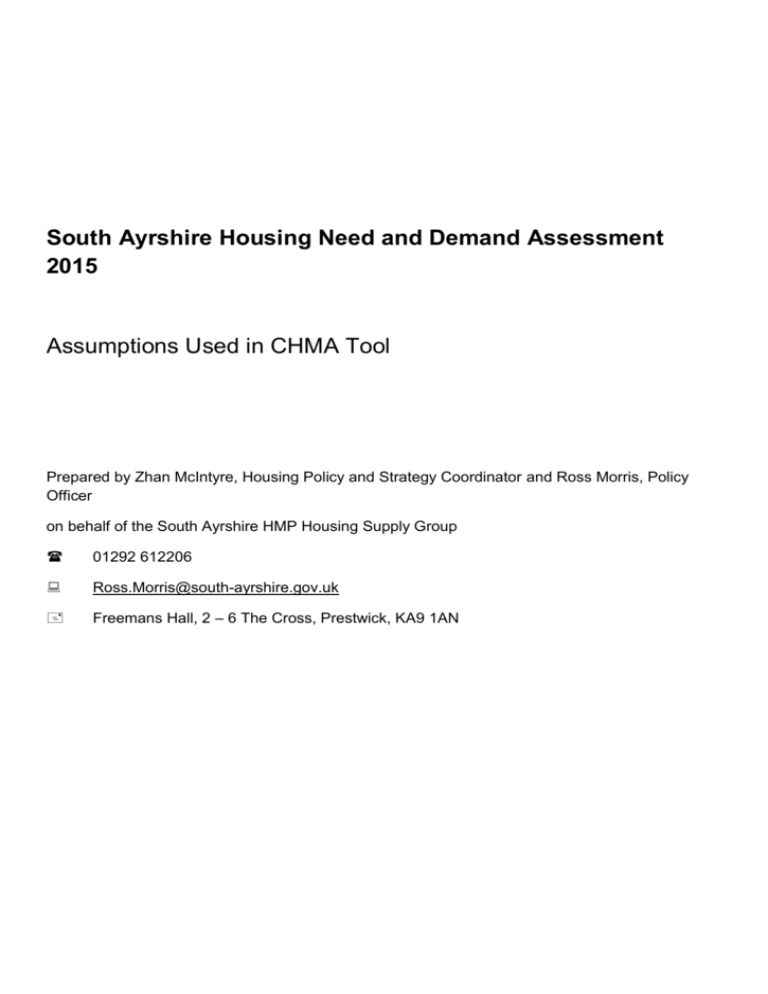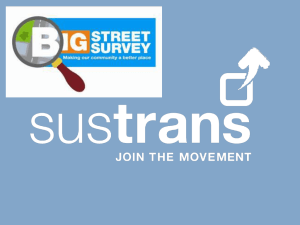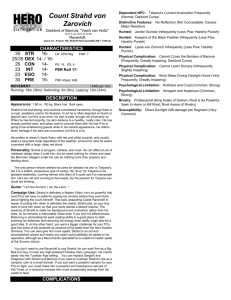SA HNDA 2015 Assumptions Used in CHMA Tool
advertisement

South Ayrshire Housing Need and Demand Assessment 2015 Assumptions Used in CHMA Tool Prepared by Zhan McIntyre, Housing Policy and Strategy Coordinator and Ross Morris, Policy Officer on behalf of the South Ayrshire HMP Housing Supply Group 01292 612206 Ross.Morris@south-ayrshire.gov.uk Freemans Hall, 2 – 6 The Cross, Prestwick, KA9 1AN Assumptions Used in CHMA Tool 1. The estimate of additional new build housing required has been reached through use of the HNDA Tool (Version 2.01), developed by the Centre for Housing Market Analysis 1. 2. The HNDA Tool estimates the amount of new build housing required by tenure, ie social housing below market rent private sector housing home-ownership 3. The Tool is populated with a wide range of data, which can be manipulated to produce various scenarios. This is done by changing the assumptions underpinning the tool calculation, such as changes in income, house prices and affordability. 4. The variables in the tool are outlined in Table 1. Table 1 Variables included in CHMA Tool Element Future Demographics Existing Need Years to clear backlog Income Growth and Distribution Growth in Median Income Scenario Change in Income Distribution Prices and Affordability Percentile Income Ratio Proportion of market who buy Upper income-to-rent threshold Lower income-to-let threshold Rent Growth Recovery Choice of Future Demographic Scenario 5. The HNDA Tool (Version 2.01) includes 2012 based projections. 6. The Housing Supply Group (HSG) agreed to use the High Migration 2012 household projections, as discussed in Chapter 2 (page 10) of the HNDA. Existing Need for Additional Housing 7. The HNDA Tool includes an agreed methodology that a number of local authorities across Scotland have agreed with the Centre for Housing Market Analysis known as the Homelessness and Temporary Accommodation Pressure (HaTAP) Method2. 8. 1 2 The HaTAP Method is an indicator of the existing pressure on homelessness and temporary accommodation and uses modelled estimates of the rate of social sector new build that would be needed to ensure that the proportion of lets to homeless households does not exceed a fixed proportion and that the number of people in temporary accommodation does not increase. The Tool outputs are available online Source Click here for more details on the Homelessness and Temporary Accommodation Pressure (HaTAP) Method 9. In addition to this, an estimate is made of the number of additional new build units required to reduce the level of temporary accommodation over five years; this is done by taking the snapshot level of temporary accommodation at the end of the quarter and dividing by five. 10. However, the HSG felt that the figure of existing need produced by the HaTAP model did not reflect the level of backlog need existing in South Ayrshire. 11. Instead, the HSG suggested drawing on the HaTAP figure in addition to the number of households who are overcrowded AND concealed in the calculation for additional units; this figure is also provided by the CHMA3. 12. Table 2 illustrates the component parts used. Table 2 Existing Need Calculation Need Figure HaTAP Overcrowded AND Concealed Household Midpoint Total Existing Need for Affordable Housing Number 390 400 790 13. The HNDA Tool provides a function that distributes existing need across tenures, eg social rented sector, private renting and home ownership. 14. The HSG agreed that to make use of the Affordability model. Time to Clear Existing Need 15. The number of years estimated to clear existing need within HNDA Tool has been set at five years; however, it was suggested that it could take up to ten years to clear this need. 16. Furthermore, a figure of ten years is in line with the Local Plan timescale, and it was felt that this time-frame was more realistic. 17. Therefore, the HMP agreed that in terms of scenario testing, existing need should be cleared in ten years. Income Growth and Distribution 18. Herriot-Watt income estimates are included in the HNDA Tool as indication of income. 19. Based on past trends highlighted in the Key Market Drivers Chapter, the view of the HSG is that for the foreseeable future, and for the purposes of scenario testing, income growth in South Ayrshire will be: Inflation Target (no real growth) Flat 20. Over the past decade there has been an increasing disparity both percentage and real terms between the lower quartile and upper quartile household incomes across both Housing Market Areas Income Distribution is skewed in favour of upper quartile, with lower quartile showing a decrease over past six years. 21. Based on these trends, the view of the HSG that for the foreseeable future, and for the purposes of scenario testing, income distribution may have one of the following trajectories: Creeping inequality Higher end runs away 3 Source Overcrowded AND Concealed Household Estimates Based on 2008 to 2010 Data from the Scottish Household Survey Prices and Affordability 22. Based on past trends highlighted in the Key Housing Drivers Chapter, the view of the HSG is that for the foreseeable future, and for the purposes of scenario testing, house prices may have the following trajectories: Flat Modest Recovery Affordability Assumptions 23. The overall estimates of additional housing required must be split into households who are able to afford owner occupation, private rent, below market rent and social rent. 24. In order to determine whether households could or could not purchase in the market, it is necessary to make an assumption in relation to the house prices and income. 25. The CHMA recommend a relationship between 4 x income and the lower quartile house prices – as this is broadly equivalent to a 3.2 x income with a 20% deposit; however in order to ensure affordability, the HSG agreed to use a relationship of 3.2 x income and lower quartile prices – which would be broadly equivalent to a 2.9 x income with a 10% deposit. 26. In relation to the proportion of households who are able to purchase and actually do, the CHMA suggest a starting point of 50%; however, as shown in Key Housing Drivers Chapter the entry threshold would suggest a lower proportion of households would be able to meet their need by purchasing a property – therefore the HSG agreed that a figure of 40% should be used. 27. Renters must be divided into those who can afford private rent, below market rent or social rent; the CHMA suggest the following parameters: The dividing line between market and below market rent should be spending 25% of income on the median rent in the area The dividing line below market rent and social rent should be spending 35% of income on the 30th percentile of market rents 28. The HSG agreed to use these parameters. 29. Based on the discussion above, eight scenarios were tested, outlined in Table 3. Table 3 Scenario Testing Variables Scenario Income Growth Income Distribution House Prices Scenario 1 Scenario 2 Scenario 3 Scenario 4 Scenario 5 Scenario 6 Scenario 7 Scenario 8 Inflation Target Inflation Target Inflation Target Inflation Target Flat Flat Flat Flat Creeping Inequality Creeping Inequality Higher End Runs Away Higher End Runs Away Creeping Inequality Creeping Inequality Higher End Runs Away Higher End Runs Away Flat Modest Recovery Flat Modest Recovery Flat Modest Recovery Flat Modest Recovery Rent Growth Assumptions Modest Increases Modest Increases Modest Increases Modest Increases Modest Increases Modest Increases Modest Increases Modest Increases









